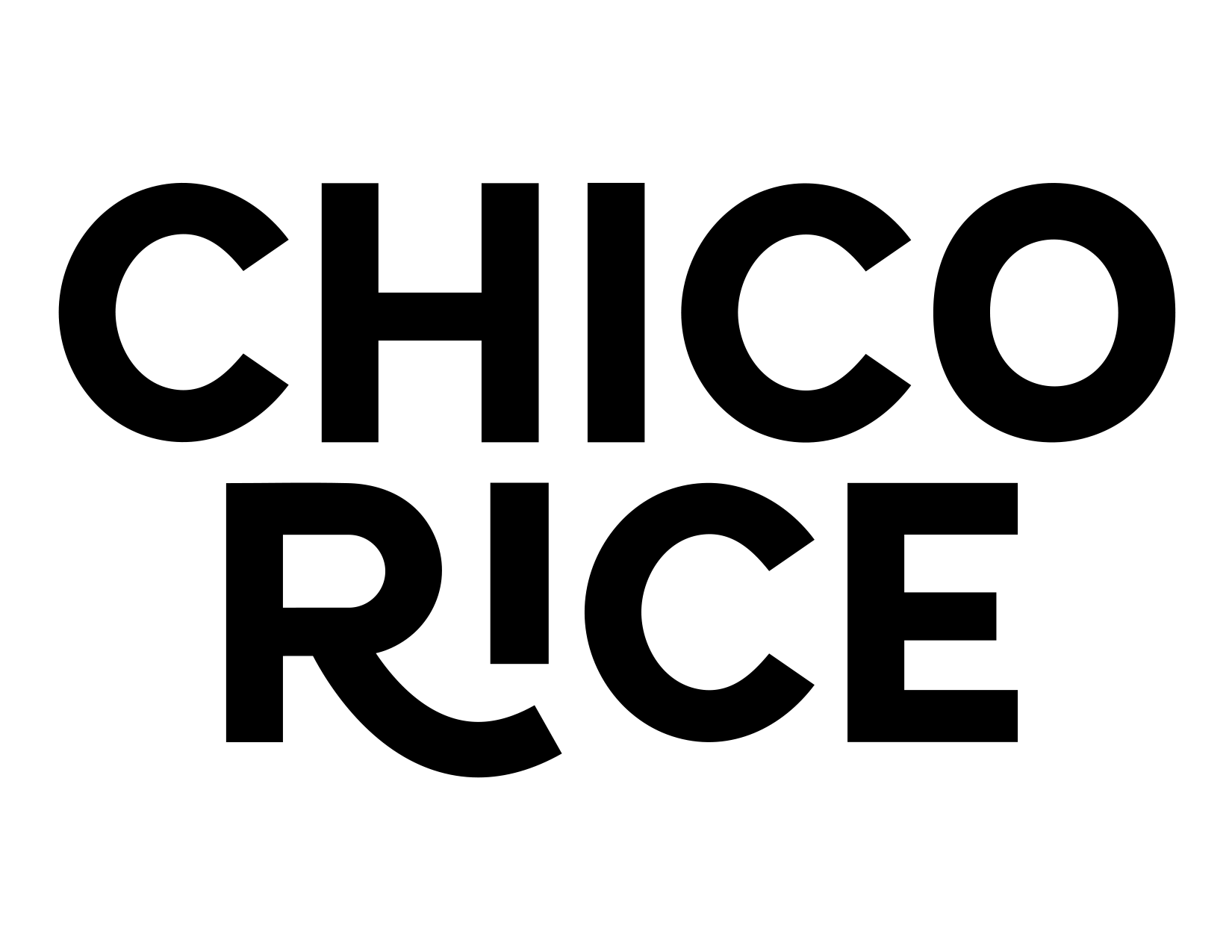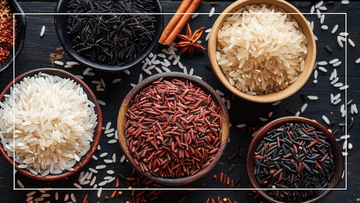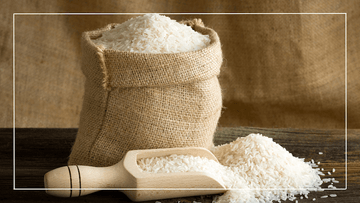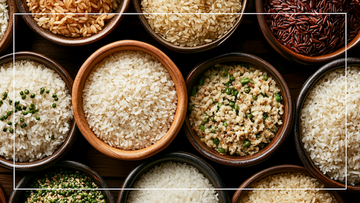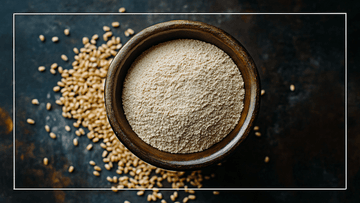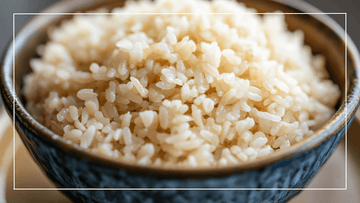Are you a fan of Japonica rice? You're in good company! This beloved rice variety, primarily cultivated in Asia and the United States, boasts not only a delicious nutty taste but also a distinct sticky texture that enhances countless culinary creations.
However, its popularity extends beyond flavor and texture; Japonica rice is revered for its numerous health benefits, making it a prized addition to any diet.
In this article, we will answer the question 'Is Japonica Rice Healthy?' by exploring the many benefits of Japonica rice, as well as the specific health advantages offered by its various varieties.
What is Japonica Rice?
Japonica rice, scientifically known as Oryza sativa subsp. japonica, is a short and medium-grain rice variety renowned for its slightly sticky texture and delicate sweet and nutty flavor, making it a staple in sushi, risotto, and various other Asian culinary creations.
In the United States, rice cultivation flourishes primarily in two states: Arkansas and California.
Our Chico Rice farm, nestled in California's Sacramento Valley, capitalizes on the state's status as the second-largest rice producer, with the majority of its output comprising Japonica rice varieties.
The history of rice cultivation in California dates back to the renowned California Gold Rush in 1849, marking the inception of rice agriculture in the region.
Now that you we have answered what Japonica rice is and how popular it is, the next question to ask is Japonica rice healthy?
Japonica Rice Health Benefits
Is Japonica Rice Healthy? Absolutely! Here are some of the key health benefits associated with consuming Japonica rice:

Nutrient-Rich
Japonica rice is packed with essential nutrients, including carbohydrates, protein, fiber, and various vitamins and minerals.
It serves as an excellent source of energy and can help maintain overall health and well-being.
Low in Fat
Compared to other types of rice, Japonica rice is relatively low in fat, making it a suitable option for those watching their fat intake.
A diet low in saturated fat can contribute to better heart health and reduced risk of cardiovascular diseases.
Gluten Free
For individuals with gluten sensitivities or celiac disease, Japonica rice is a safe and delicious alternative to wheat-based grains.
Its gluten free nature allows people with gluten-related disorders to enjoy a wide range of culinary options without compromising their health.
Brown Japonica Rice Health Benefits
Brown Japonica rice, which is an unpolished or whole grain Japonica rice, retains its bran layer and germ, which are rich in nutrients. As a result, it offers additional health benefits compared to other Japonica rice varieties.
High in Fiber
Brown Japonica rice is an excellent source of dietary fiber, which promotes digestive health, regulates bowel movements, and helps prevent constipation.
Fiber also contributes to a feeling of fullness, which can aid in weight management and control.
Rich in Antioxidants
The bran layer of brown Japonica rice contains antioxidants such as vitamin E, polyphenols, and ferulic acid, which help neutralize harmful free radicals in the body.
Antioxidants play a crucial role in reducing inflammation, supporting immune function, and protecting against chronic diseases.
White Japonica Rice Health Benefits
While white Japonica rice undergoes a milling process that removes the bran and germ, it still offers several health benefits, albeit to a lesser extent compared to brown Japonica rice.
Quick Source of Energy
White Japonica rice is easily digestible and quickly converted into glucose, providing a rapid source of energy for the body.
This makes it an ideal choice for athletes and individuals with high energy demands.
Nice to the Tummy
While brown rice has more fiber than white rice, and fiber can help with digestion, it can be hard on sensitive stomachs.
White rice is part of the BRAT (Bananas, rice, applesauce, and toast) diet which is recommended by doctors when children are having upset stomachs.
Note: This diet can help with short term affects, do not follow this diet for long periods of time.
Haiga-Mai Milled Japonica Rice

The reason that white rice loses a lot of its nutrients is because of the milling process that strips the bran and germ layer off the rice.
A method of milling that allows some nutrients to stay on the rice but also have the texture of white rice is the haiga-mai style.
The haiga-mai milling process semi-polishes the rice, removing the bran layer but not the germ on the rice.
This gives the rice a faster cooking time and the easier digestibility that you find in white rice but has the nutrients that is found in brown rice.
Chico Rice enjoys using this process on their rice that they labeled, Blonde Milled California Japonica Rice. You get the best of both worlds of health and texture with this rice!
Other Japonica Rice Varieties
In addition to brown and white Japonica rice, there are several other varieties of Japonica rice, each offering its own unique set of health benefits.
Some popular examples include black and red Japonica rice.
Black Japonica Rice Health Benefits
Black Japonica rice is prized for its deep, rich color, which is indicative of its high antioxidant content.
It contains anthocyanins, the same compounds found in blueberries and blackberries, which can help with heart health.
Red Japonica Rice Health Benefits
Red Japonica rice, also known as Bhutanese red rice, is a whole grain rice variety with a nutty flavor and chewy texture.
Like other whole grains, it is rich in fiber, vitamins, and minerals, making it a nutritious choice for maintaining overall health and well-being.
Enjoy Healthy Japonica Rice
Whether you prefer the chewy texture of brown Japonica rice or the fluffy consistency of white Japonica rice, incorporating this versatile grain into your diet can offer a wide range of health benefits.
From providing essential nutrients to supporting digestive health and reducing inflammation, Japonica rice is indeed a healthy choice for individuals of all ages.
So, the next time you're wondering, "Is Japonica rice healthy?" the answer is a resounding yes!
